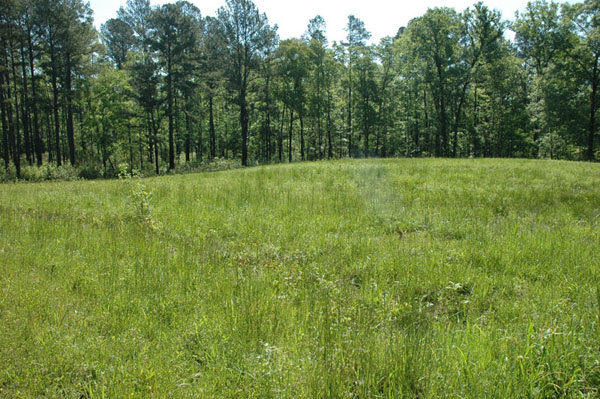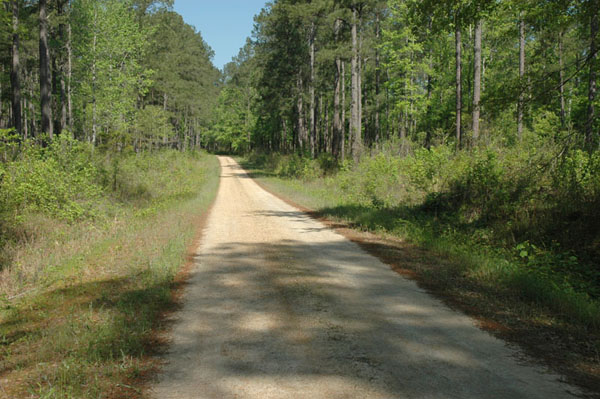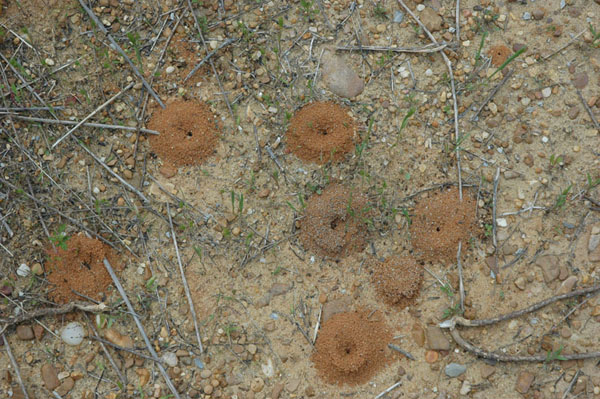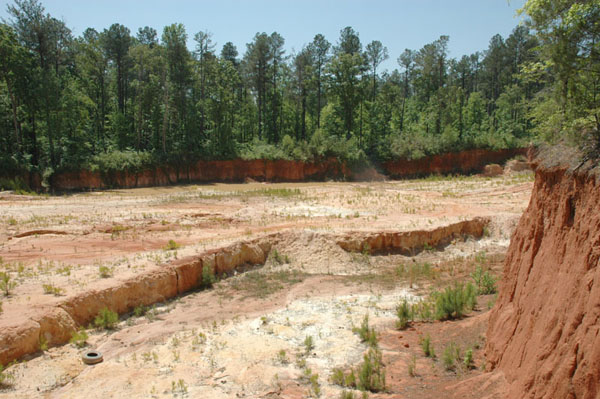Ants in Fields, Grasslands, Roadsides, and other Open Areas of Noxubee National Wildlife Refuge, Mississippi
Joe A. MacGown and JoVonn G. Hill
Click links to view ants in the primary habitat types at the Noxubee National Wildlife Refuge.
[Noxubee Ants-all habitats] [pine forests] [pine/hardwood forests] [bottomland hardwood forests] [upland hardwood forests] [fields, grasslands, & other open areas] [disturbed wooded areas]
A recent project was undertaken by the MEM to survey the Noxubee National Wildlife Refuge in Oktibbeha, Noxubee, and Winston Counties for ants. The refuge owns approximately 48,000 acres, which can be separated into three primary habitats: forests, fields and grasslands, and wetlands. By far, forests form the majority of the refuge and cover about 45,000 acres (about 93%). The forests can be further divided into four major types including pine (23,619 acres), mixed pine/hardwood (2,851 acres), bottomland hardwood (15,453 acres), and upland hardwood (3,263 acres). In this study we examined six terrestrial habitat types to determine species compositions for each habitat. Habitat types for this study included pine forests (both mature and young forests, and recently burned or unburned); bottomland hardwood forests (including cypress dominanted areas); upland hardwood forests; mixed pine/hardwood forests (including one area intermixed with cedar); open habitats including fields, grasslands, roadsides, and a sand pit; and disturbed, open mixed forests located near buildings and picnic areas. The latter disturbed sites were included because of their likelihood of being ideal habitats for various exotic species. In addition to the ants collected during this survey, the total list of species from the refuge includes earlier records of ants collected by the Mississippi Entomological Museum (MEM). Collecting methods included baiting, beating and sweeping vegetation, litter sampling, and visually searching for ants and their colonies. Our collections have revealed a diverse fauna, and we have collected 98 species (species list) at the refuge.
Grasslands and fields account for only about 958 acres of the entire refuge. These areas include forest openings (between 1 and 150 acres each), the Morgan Hill prairie restoration area, and utility rights-of-way. Additionally, we made collections at an open sand pit and along roadsides. Morgan Hill is the only area managed as a natural grassland at the refuge. In 1993, test plots of Indian, switch, and big bluestem grasses were planted there in an attempt to restore a portion of the Black Belt Prairie that was thought to have occurred in the area. This area is burned approximately every two years to control the growth of woody vegetation, such as cedar. The sandpit, located in Winston County, is a large sand deposit located in the southwest portion of the refuge and is used by the refuge for construction or road needs. Open habitats, especially non-sandy ones, are not known to sustain high diversity of ant species. This is in part due to the lack of structure (i.e. vegetative structure, woody debris, etc.) and because of high temperatures during the warm seasons that can negatively affect foraging or nesting of many species. Thus far we have found 19 species in grasslands, fields, and other open areas (species list below).
 |
 |
A managed field on Keaton Tower Road |
Roadside habitat on Keaton Tower Road |
 |
 |
Grassland habitat at Morgan Hill |
Forelius mccooki colonies on the hard-packed trail at Morgan Hill |
 |
 |
The sandpit in Winston County |
Another view of the sandpit |
Ants from Fields, Grasslands, Roadsides, and Other Open Areas of the Noxubee National Wildlife Refuge
(Species are arranged alphabetically by genus)
Brachymyrmex patagonicus Mayr (introduced, pest) [sandpit, near parking area by field near Loakfoma Lake]
Camponotus decipiens Emery (pest) [sweeping grasses in field]
Dorymyrmex bureni (Trager) [roadside, sandpit]
Forelius mccooki (McCook) [grassland, field, roadside, sandpit]
Formica biophilica Trager [grassland]
Formica dolosa Buren [sandpit]
Formica pallidefulva Latreille [field, sandpit]
Hypoponera opacior (Forel) [grassland]
Monomorium minimum (Buckley) (pest) [grassland, fields, roadside]
Myrmecina americana Emery [litter in grassland]
Nylanderia faisonensis (Forel) [in litter beneath shrub in grassland]
Nylanderia vividula (Nylander) (introduced?, pest)
[grassland, sandpit]
Pheidole bicarinata Mayr (pest?) [roadside, at gravel parking lot & field edge]
Pheidole tysoni Forel [grassland]
Ponera pennsylvanica Buckley [base of Carya sp. in field; litter beneath bushes in grassland]
Solenopsis carolinensis Forel ?? [grassland, field,]
Solenopsis invicta x richteri (introduced, pest) [grassland, field, roadside, sandpit]
Strumigenys dietrichi Smith [at base of clump grass]
Tapinoma sessile (Say) (pest) [grassland]
Links
MacGown, J. A., J. G. Hill, T. L. Schiefer, and R. L. Brown. 2012. Ant diversity and habitat associations at the Noxubee National Wildlife Refuge in Mississippi. Mississippi Agricultural and Forestry Experiment Station Technical Bulletin 1197. [pdf]
Landmarks article about the Noxubee Study [pdf]
Noxubee National Wildlife Refuge [http://www.fws.gov/noxubee/]


